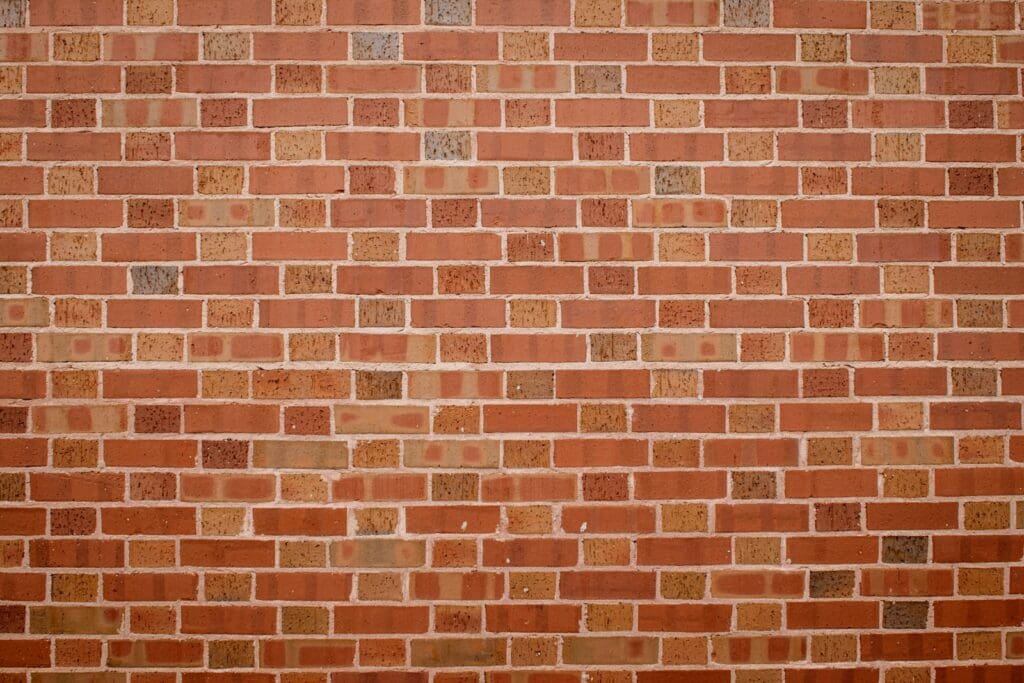Intro To the 5 Brick Bonds of Masonry
“The details are not the details. They make the design.” – Charles Eames
Masonry bonds may seem like mere patterns, but they are essential for both aesthetics and structural stability.
Ever wondered why some brick walls look different but still stand tall? It’s all about the bond used.
In this post, we’ll break down the five fundamental masonry bonds. We’ll explain what each is used for and how they enhance a building’s durability.
We’ll begin with a brief intro to what masonry bonds are. Then, we’ll explore the specifics of the following bonds:
- Running Bond
- Stack Bond
- English Bond
- Flemish Bond
- Header Bond
By the end, you’ll understand why each pattern exists and how to choose the right one for your construction needs.
Table of Contents
Understanding the 5 Basic Bonds of Masonry

Introduction to Masonry Bonds
Masonry bonds refer to the pattern used to lay bricks or stones. This pattern not only impacts the aesthetic appeal but also enhances the structural integrity of the building. Here, we explore the five primary bonds used in masonry.
Types of Masonry Bonds
- Running Bond
- Stack Bond
- English Bond
- Flemish Bond
- Header Bond
Detailed Breakdown of Each Bond
Running Bond
The Running Bond is the most common brickwork bond.
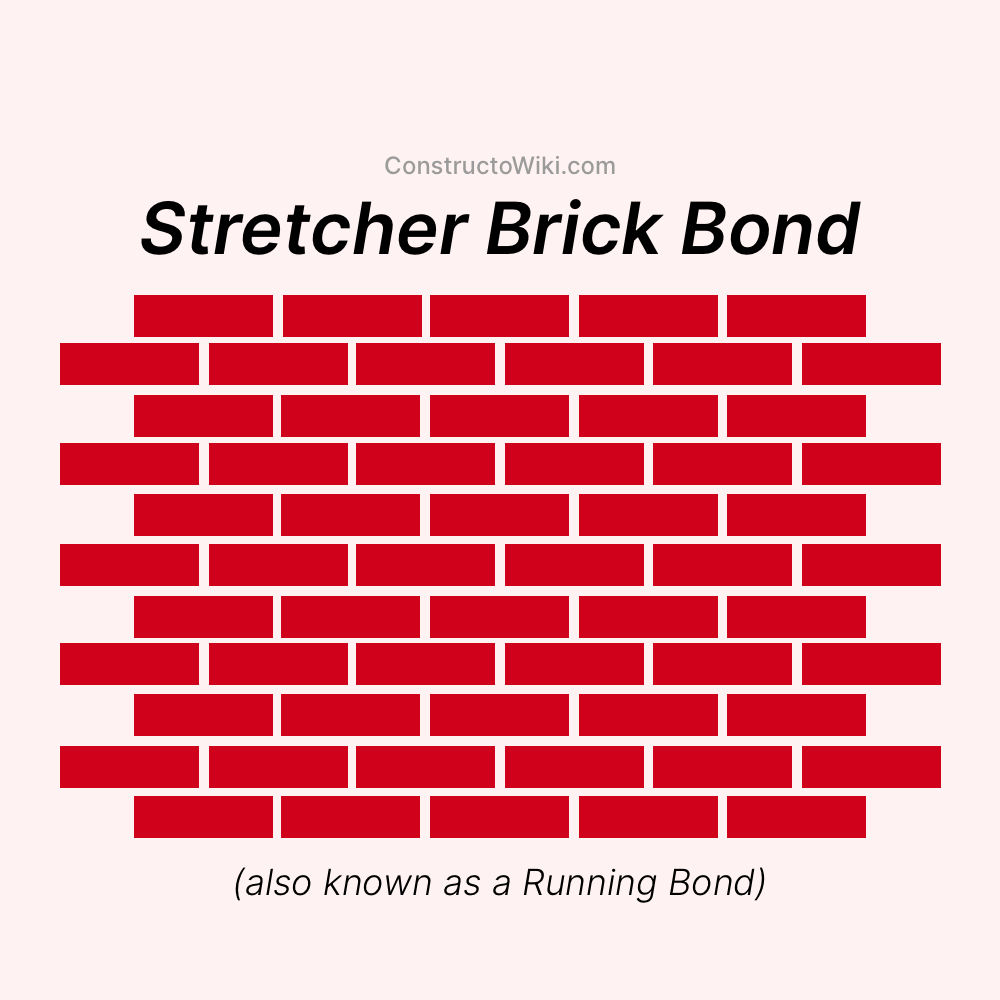
| Attributes | Description |
|---|---|
| Pattern | Bricks are laid with each one staggered halfway over the one below. |
| Best Used For | Walls needing flexibility and minimal cutting. |
Stack Bond
The Stack Bond is known for its modern and linear appearance.
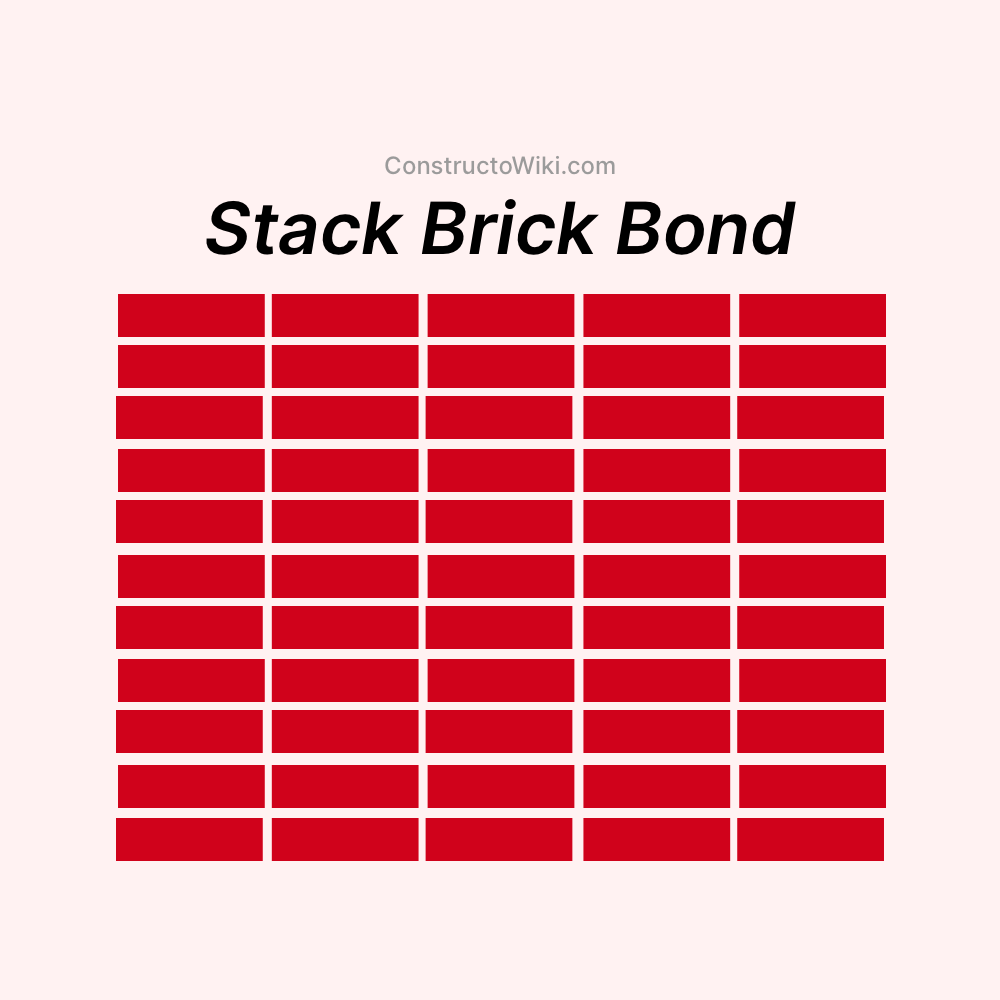
| Attributes | Description |
|---|---|
| Pattern | Bricks are stacked directly on top of each other. |
| Best Used For | Non-load-bearing walls, accents, and facades. |
English Bond
The English Bond is a traditional and strong pattern.

| Attributes | Description |
|---|---|
| Pattern | Alternates each row between headers and stretchers. |
| Best Used For | Heavy-load-bearing walls and historical buildings. |
Flemish Bond
The Flemish Bond combines aesthetics with strength.

| Attributes | Description |
|---|---|
| Pattern | Alternates headers and stretchers in each row, creating a diamond pattern. |
| Best Used For | Walls where appearance and strength are both essential. |
Header Bond
The Header Bond is also known as the Heading Bond.
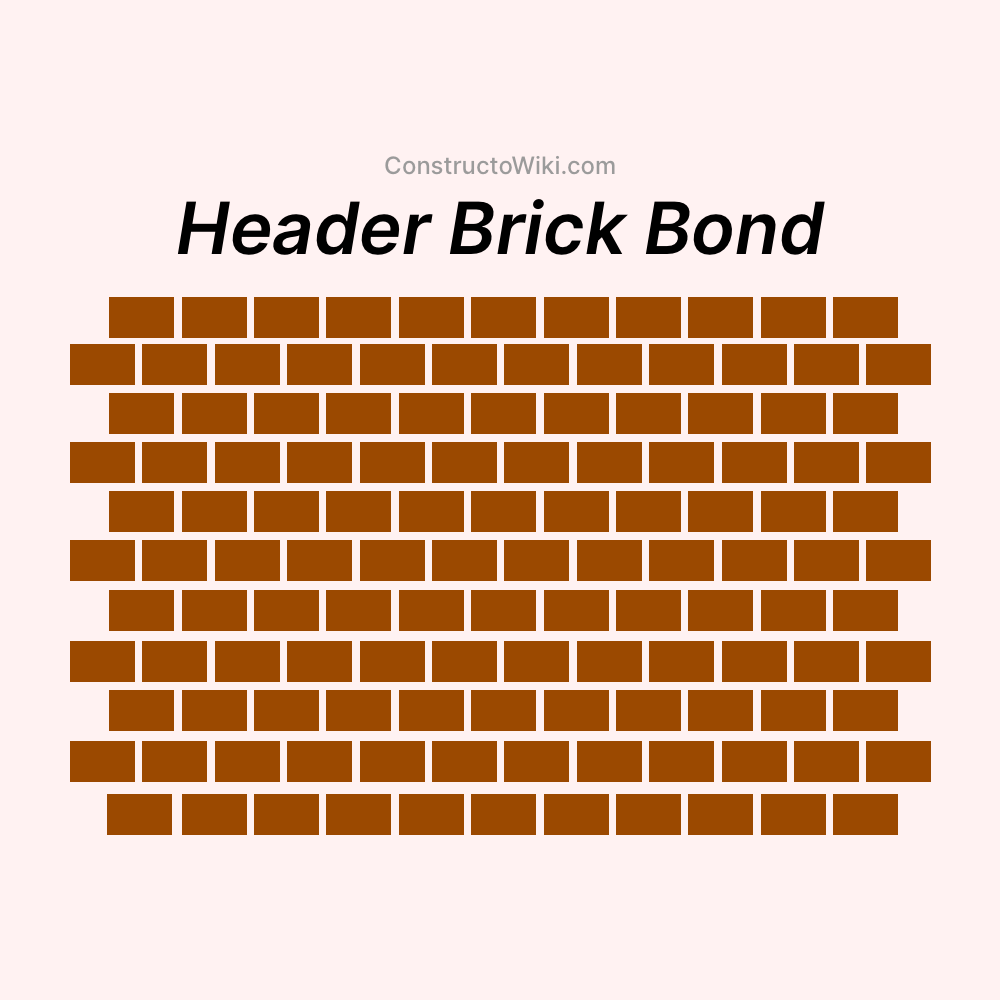
| Attributes | Description |
|---|---|
| Pattern | Only the short end, or header, of the brick is visible. |
| Best Used For | Thick walls requiring strength and depth. |
The Most Common Masonry Bond
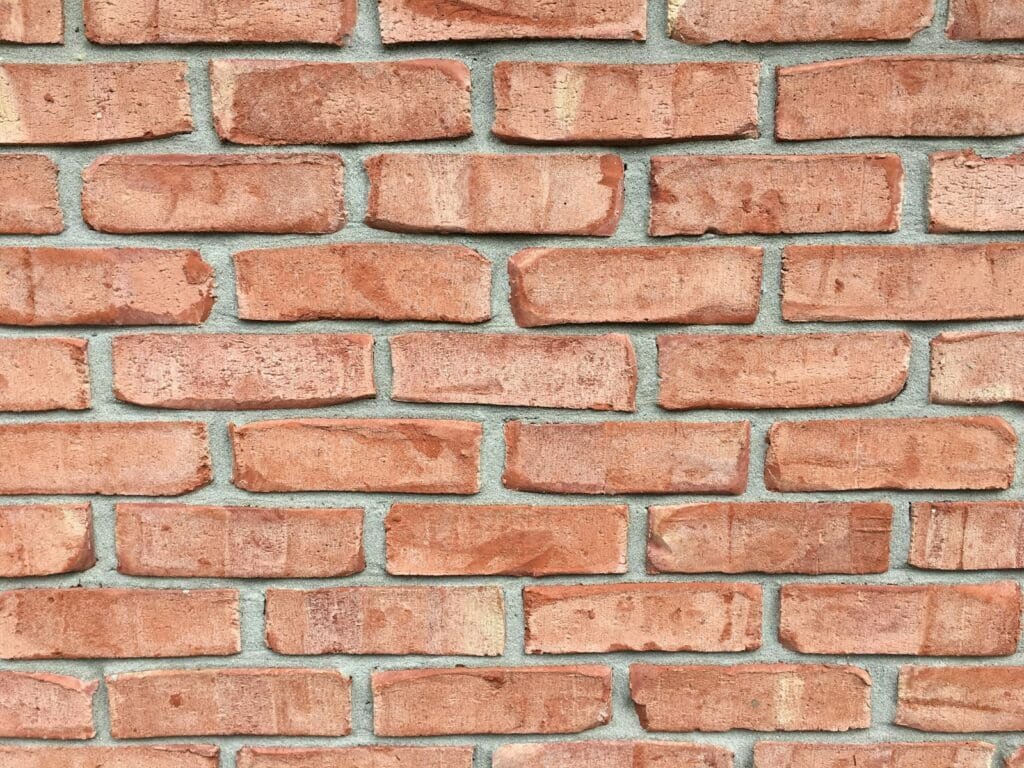
Why Running Bond is the Most Common
The running bond, a widely recognized and frequently used masonry bond, stands out for a few noteworthy reasons.
Advantages of Running Bond
- Simplicity in Laying
- Flexibility in Application
- Cost-Effective Construction
Simplicity in Laying
Due to its staggered nature, the running bond offers an uncomplicated pattern that even novice masons can master with ease. The bricks are laid uniformly, with each one offset by half the length of the one below it. This simplicity reduces the time and skill required for laying the bricks, which is why it’s a popular choice for residential and commercial buildings.
Flexibility in Application
Running bonds can be applied to various construction projects, including walls, walkways, and chimneys. The pattern provides an inherent flexibility, making it suitable for both straight and curved surfaces. Its versatility extends to different types of bricks and stones, ensuring that it can accommodate a wide range of materials.
Cost-Effective Construction
Given its straightforward pattern and ease of installation, the running bond often proves to be cost-effective. Less skilled labor is required, which can reduce labor costs. Additionally, the pattern requires minimal cutting of bricks, reducing both waste and material costs.
Structural Benefits of Running Bond
Enhanced Wall Integrity
The staggered alignment of bricks in a running bond contributes to the overall strength and stability of the wall. This alignment helps in evenly distributing loads and handling tensile stress, making it an excellent choice for buildings in various seismic zones.
Thermal Efficiency
The pattern also plays a role in thermal efficiency. The staggered nature of the bricks creates a more insulated wall, helping to maintain indoor temperatures and reduce energy consumption.
Popular Uses of Running Bond
- Residential Walls
- Garden Walls
- Pathways and Patios
Residential Walls
Because of its ease of application and pleasing visual effect, the running bond is frequently used in residential construction for both internal and external walls. It offers a classic look that complements a variety of architectural styles.
Garden Walls
Running bonds are a popular choice for garden walls and other landscape features. Their simple, linear appearance blends well with natural environments, providing both aesthetic appeal and functional support for soil retention and plant growth.
Pathways and Patios
In landscaping, the running bond pattern is often used for pathways and patios. Its linear design helps in guiding foot traffic in a specific direction, and its structural integrity supports frequent use.
To discover more masonry patterns and bonds that match your specific needs, you can also visit The Spruce website. This resource provides practical masonry tips and detailed explanations of various brickwork patterns.
How Masonry Bonds Affect Structural Integrity
Load Distribution in Masonry Bonds
The way masonry bonds are laid not only enhances their look but also the way they distribute the load and stress across a wall. Different bond patterns can influence the overall stability and strength of a structure.
Running Bond and Flexibility
The running bond’s staggered bricks provide flexibility, allowing it to better handle stress and shift slightly under load without cracking.
Strength of English and Flemish Bonds
English and Flemish bonds, with their alternating patterns of headers and stretchers, are known for their superior strength. They distribute loads evenly and are suitable for more heavy-duty construction like load-bearing walls and historical buildings.
Stack Bond’s Structural Limitations
The stack bond, while aesthetically pleasing, is not as strong as others due to its linear vertical alignment. It requires additional reinforcement for structural stability in load-bearing applications.
Thermal Mass and Insulation
Masonry walls also contribute to a building’s thermal mass, impacting its energy efficiency. Bonds like the running and English bond create air pockets that can act as insulation, reducing heating and cooling costs.
Applications in Seismic Zones
In regions prone to earthquakes, masonry bonds like the running and English bonds are preferred for their ability to distribute seismic forces more evenly, enhancing the building’s resilience to tremors.
Choosing The Right Masonry Bond
Selecting the appropriate masonry bond is crucial to ensuring not only the aesthetic harmony of your project but also its long-term durability and safety. Each bond pattern offers unique advantages and suits different types of projects.
Here’s a quick guide to help you make the best choice:
Factors to Consider When Selecting a Bond
- Load-bearing Requirements: If your structure needs to support considerable weight, consider stronger bonds like the English or Flemish bonds.
- Architectural Style: Choose a bond that complements the architectural style of the building. For modern designs, the stack bond might be perfect, whereas traditional settings might benefit from the classic English or Flemish bonds.
- Budget Constraints: Running bonds are generally more cost-effective due to their simplicity and the lower skill level required for installation.
- Seismic Considerations: In earthquake-prone areas, flexible and robust patterns like the running and English bonds are recommended to enhance structural resilience.
Making Your Selection
- Residential vs. Commercial: For residential projects, the running bond provides both aesthetic appeal and practicality. In commercial settings, where structural demands can be greater, the Flemish or English bonds may offer better solutions.
- Internal vs. External Walls: Consider thermal and moisture considerations. Internal walls might benefit from simpler bonds, whereas external walls require more durable patterns to withstand environmental stresses.
- Landscaping Features: For garden walls, pathways, and patios, the running bond is often favored for its straightforwardness and aesthetic alignment with natural landscapes.
By understanding the specifics of each bond and assessing the needs of your project, you can choose the right masonry bond that not only looks great but also meets all functional requirements.
Remember, the bond you select will significantly influence the structural integrity, aesthetic quality, and cost-effectiveness of your project. For further assistance and more detailed information on each bond type, consulting with a professional mason or a structural engineer is advisable.
The Role Of Mortar In Masonry Bonds
Understanding the integral role of mortar in masonry construction can significantly impact the durability and effectiveness of the chosen bond pattern. This section explores the types of mortar and their importance in different masonry bonds.
Importance of Mortar Consistency
Mortar acts as the binding agent between bricks or stones, providing structural integrity, sealing against moisture, and contributing to the overall aesthetic. The consistency of the mortar—how wet or dry it is—can affect the ease of application and the strength of the bond. Properly mixed mortar ensures a smooth application process and optimal strength once cured.
Types of Mortar and Their Applications
- Type N Mortar: Commonly used for above-ground applications where moderate strength is sufficient. This type is ideal for soft stone masonry and non-load-bearing walls.
- Type S Mortar: Offers great strength and excellent bonding properties, making it suitable for foundations, retaining walls, and other structures exposed to severe weather conditions.
- Type M Mortar: With the highest strength, Type M is used for heavy loads and below-grade applications, like foundations and driveways.
- Type O Mortar: Known for its low strength, it is best used for interior and non-load-bearing applications where the primary function is decorative.
Matching Mortar to Masonry Bond
Choosing the right type of mortar is as crucial as selecting the appropriate masonry bond. For example:
- Running and Stack Bonds: These bonds, often used in visible areas for their aesthetic appeal, typically perform well with Type N mortar due to its flexibility and ease of use.
- English and Flemish Bonds: As these bonds are preferred for their strength in load-bearing walls, Type S or M mortar might be necessary to enhance the structural capabilities of these bonds.
Best Practices for Mortar Application
- Proper Mixing: Ensure that the mortar is mixed thoroughly to a consistent texture before application.
- Timely Application: Mortar should be used within a couple of hours of mixing to prevent drying and weakening of the bond.
- Curing Process: Keep the mortar moist for several days after application to ensure strong curing and maximum bond strength.
This understanding of mortar’s role compleates the masonry bond process, enhancing both the functionality and longevity of the structure. For projects where both the appearance and structural integrity are paramount, selecting the correct mortar type in conjunction with the appropriate masonry bond is essential.
Conclusion
The five basic masonry bonds—Running, Stack, English, Flemish, and Header—each bring unique characteristics to building construction.
These patterns enhance both the aesthetic appeal and structural integrity of buildings.
The Running Bond stands out for its simplicity and flexibility, making it cost-effective and widely adopted. English and Flemish bonds offer strong load-bearing capabilities, while Stack and Header bonds provide specific aesthetic and structural benefits.
Masonry bonds not only secure the structure but also play a significant role in thermal efficiency and seismic resilience.
Frequently Asked Questions – FAQs
What is a masonry bond?
A masonry bond is the pattern in which bricks or stones are laid to ensure stability and enhance the visual appeal of a structure.
Which masonry bond is the strongest?
The English and Flemish bonds are considered among the strongest, suitable for heavy-load-bearing walls and historical buildings.
Why is the running bond so popular?
The running bond is popular because of its simplicity, flexibility, and cost-effectiveness. It’s easy to lay and requires minimal brick cutting.
Are stack bonds suitable for load-bearing walls?
No, stack bonds are primarily used for non-load-bearing walls, accents, and facades due to their linear pattern and lack of structural strength.
How do masonry bonds affect thermal efficiency?
Masonry bonds like the running and English bonds create air pockets that insulate the wall, improving thermal efficiency by maintaining indoor temperatures.
